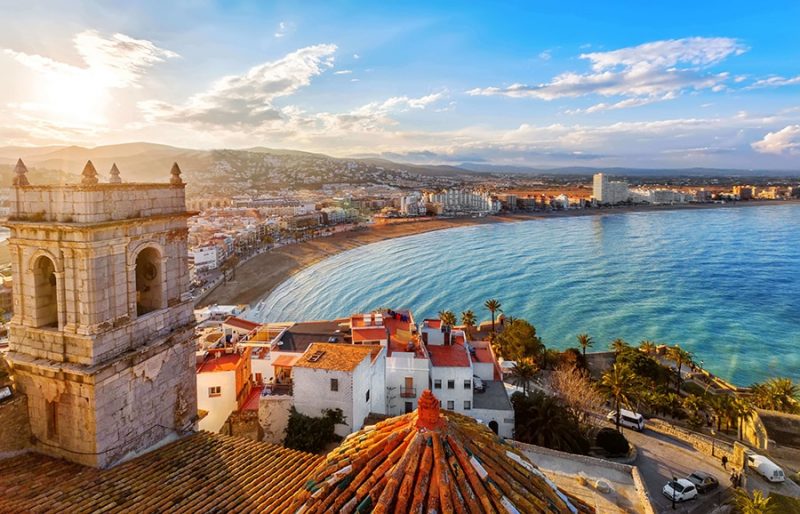Discover the high and low season months in Valencia. See all the tips on the subject, to better plan your trip. When deciding the destination of your trip, one of the most frequent questions that arise is regarding the date. Some people question themselves and believe that the high season period is the best for travelling abroad. So, we take this opportunity to give you some tips about the high and low season months in Valencia.
These are very good tips, worthwhile, and will save you a lot in all the planning of the trip and when you are there. Your trip to Spain will be cheaper than you imagined and you will be able to enjoy it even more.
High season in Valencia
The high season in Valencia is marked by summer, a season with more pleasant averages in the city, around 25ºC. Due to the proximity of the sea, the hot days are cooler and when the wind comes from the coast you are very grateful, as it relieves the heat. The hottest month is August, with temperatures exceeding 30ºC. Summer is a dry season in relation to rain, which ensures that tourists are able to make the most of the city and the beaches of Valencia.
What to pack: Get ready to find a heat that allows for very pleasant beaches and temperatures. In your suitcase for the summer in Valencia, bet on light clothes, bikinis, sandals and plenty of sunscreens!
Low season in Valencia
Winter is marked by the low season in Valencia, mainly due to an average of 11ºC. With the proximity of the Mediterranean Sea, it can sometimes appear colder and more humid, as it can also regulate the hottest days. The coldest month in Valencia is January, with highs of 15ºC and lows of 5ºC. Pack a scarf, gloves, a warm coat and other clothing to protect you from moisture.
What to pack: Know that cold day in Valencia also calls for heavy coats, scarf, socks, boots and thicker pants. Yes, all to protect you from the winter temperatures and humidity of Valencia.
Spring: great option to get to know Valencia
Spring is from March 21st to June 20th. In spring, the days get longer and temperatures to reach 22ºC, with an average of 11 hours of sunshine per day. It is a good season to visit the destination, as temperatures are mild and the city is very flowery. It is already starting to see more movement on the beaches, especially on sunny days. March starts with a maximum of 18ºC and as summer approaches, the temperature rises to 26ºC.
What to pack: The months of April and May require items a little warmer, such as sneakers, pants, knits and light jackets (jeans/leather). For women, at this time it is also possible to wear items such as dresses and skirts. In June, with the increase in temperature, you’ll be able to abuse lighter clothes, sandals and even a bikini in your suitcase, but without forgetting a coat to wear at night.
Fallas de Valencia
This is a festival that takes place annually in March in Valencia. The history of the Fallas begins in the 18th century when carpenters in the city decided to pay homage to São José, burning the remains of wood from the workshops. This act turned into a huge festivity, with fireworks, colourful statues and lots of fun.
Autumn in Valencia
In autumn the landscapes are beautiful, as it is when the trees begin to lose their leaves and these gain an orange colour that decorates all the streets. At the beginning of the month, temperatures are still good, reaching 23ºC in September. But as time goes on, autumn really starts to be felt, reaching around the maximum 16ºC in December.
It is the wettest season, but not the coldest, like in other European cities, it is even one of the most pleasant times to visit the city. Dawn is around 7:30 am and dusk begins around 17:00.
What to pack: Despite being autumn, temperatures are starting to drop and the winter weather already appears in Valencia. Pack heavier coats, boots, sneakers and an umbrella, as this is the time of year most prone to rainy days in this Spanish city.
Valencia Holidays
Another tip that can help you a lot when deciding when to travel to Valencia is knowing about the holidays. It may be that you want to participate in a festival or want to escape the crowds and higher prices than they usually bring. Then check out our complete list of Spanish national holidays:
January
January 1 – New Year’s Eve January
6 – Epiphany of the Lord
March
30 – Good Friday
April
April 10th – Good Friday
April 13th – Easter Monday
May
May 1st – Labor Day
June
June 24 – San Juan
August
August 15 – Assumption of the Virgin
September
September 11th – September
24th – La Mercé
October
October 12th – Spanish national holiday
November
November 1st – All Saints Day
December
December 6 – Spanish Constitution Day December
8 – The Immaculate Conception
December 25 – Christmas







